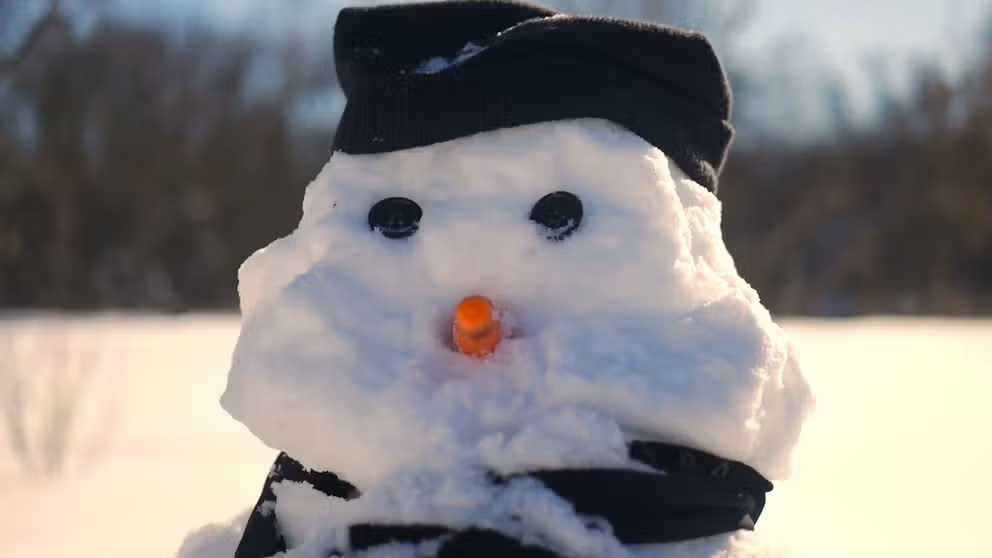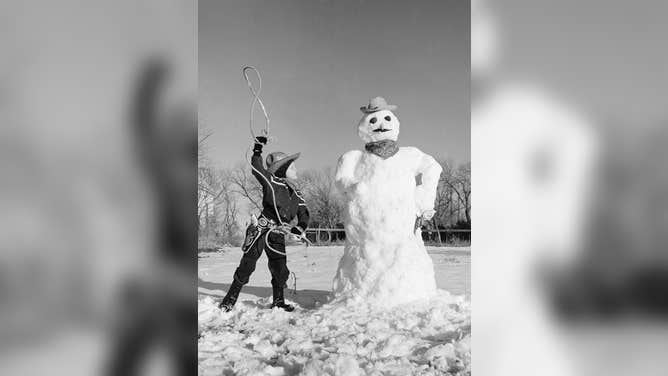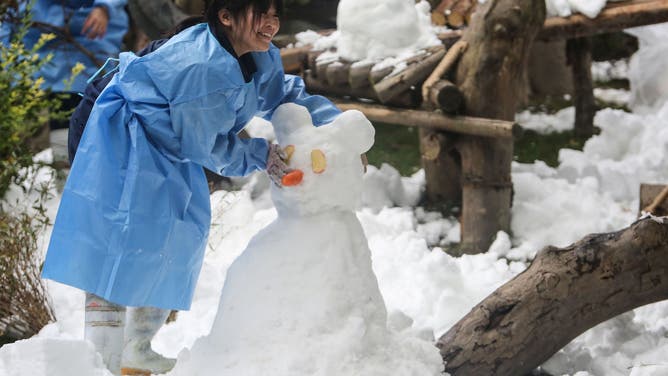Before ‘Frosty’: The origin story of the modern snowman
This ambassador of winter is a reflection of our own history — one involving art, religion, rebellion and media.
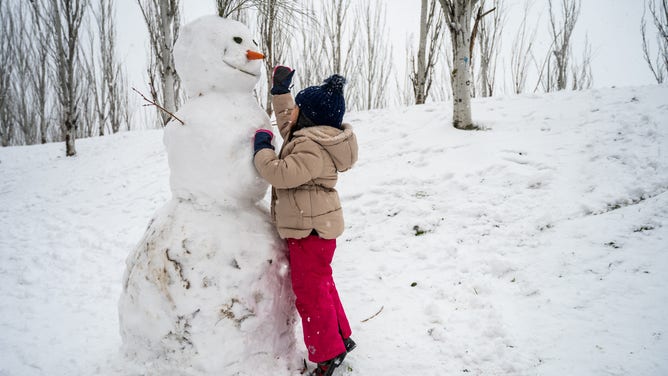
A girl builds a snowman, as snow falls in a park in Spain.
(Marcos del Mazo / LightRocket / Getty Images)
After the snow falls, they rise. Made of powder and joy, snowmen greet us with earnest smiles and rotund-yet-fragile forms.
Their fleeting nature seems to invite their creation, enticing young and old to brave the cold to build their own snowman before a degree’s difference melts their dreams away.
But what we see as an ambassador of winter fun is also an ambassador of our history — a friendly figure who serves as a reflection of who we are and where we’ve been.
From Buddha to ‘Woodstock’
The history of the snowman
This winter icon has evolved over time, and all the while reflecting human history.
"The snowman has been used for different purposes through the centuries," said Bob Eckstein, cartoonist for The New Yorker, professor at NYU and New York Times best-selling author of ‘The Illustrated History of the Snowman.’
Although building a snowman has evolved into a recreational activity, in the Middle Ages, it was another form of art.
"When snow fell from the ground, it was like free art supplies fell from the sky," Eckstein said. "We have had people who you'd never expect making snowmen, like great artists like Michelangelo."
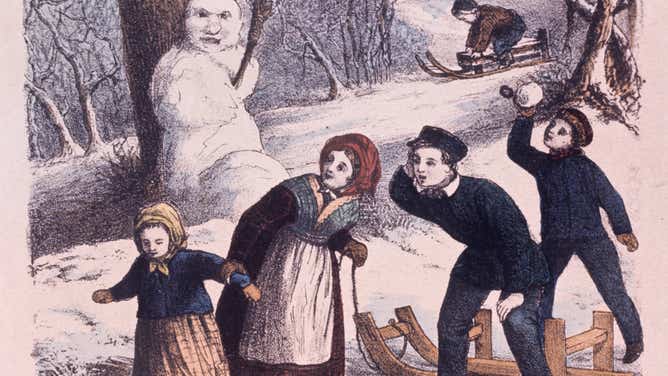
Children play in the snow, as a surly-looking snowman stands in the background.
(Marka / Universal Images Group / Getty Images)
This powdery medium was used to create, not the jolly snowmen known and loved today, but rather scenes that were more austere or spiritual in tone and often unrecognizable as "snowmen" to the modern eye.
According to Eckstein, one of the earliest records of a snowman was from 7th-century northern China. It stated the followers of Buddha were given a blessing to build the man out of snow.
Perhaps one of the most striking images of a snowman was created centuries later in the Netherlands.
"It appeared initially in an early illuminated manuscript that I found dated 1308," said Eckstein. "This was alongside the margins of a book of hours."

A snowman appears in the right margin of a page in the book of hours. The snowman is positioned near a fire and appears to be melting.
Also known as a prayer book, this book of hours features the snowman as a religious figure and places him in a scene in which he appears to be melting.
"Artwork at these different manuscripts were often filled with grotesque humor, humor that was just wild, out there," Eckstein said. "It was a way for people at that time to handle these high concepts."
Apart from helping to illustrate religious concepts, early snowmen were also used for social and political commentary.
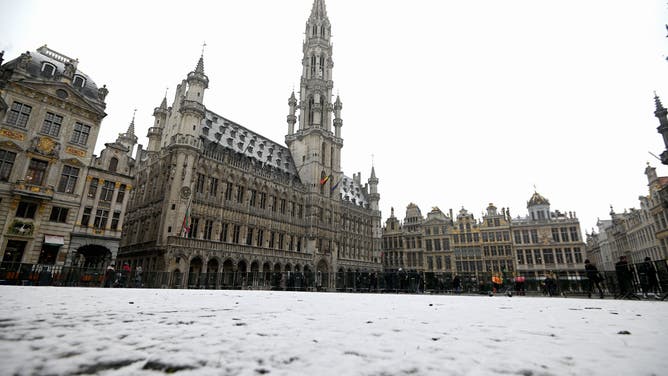
A layer of snow covers Brussels' Grand Place in 2019. Over 500 years earlier, the city was a hotbed of snowman-filled protests.
(Emmanuel Dunand / AFP / Getty Images)
"The best example is the Miracle of 1511 when, in the whole town of Brussels, Belgium, people came out and created snowy scenes that were politically charged," Eckstein said. The act gave them a chance to voice their opinion about matters pertaining to the church and the government.
Over 200 examples of snowy scenes were created, particularly those featuring politicians or other public figures in "compromising" positions.
"It was just an amazing thing," Eckstein said. "It was like the Woodstock of the Middle Ages."
The pitchman

Figures dance around a tall snowman, as featured in a 19th-century French magazine.
(DEA / Biblioteca Ambrosiana / Getty Images)
The snowman’s evolution from representing religious figures to challenging authority speaks to the priorities and concerns of the times.
"It really is something that's sort of a selfie, one of the earliest forms of selfies, and it was always reflecting what we were doing," Eckstein said.
"Snowman has been sitting side-by-side as we're evolving and seeing things through that lens."
As we evolved, so did the culture we created, which increasingly incorporated commercial interests — and the snowman was along for the ride.
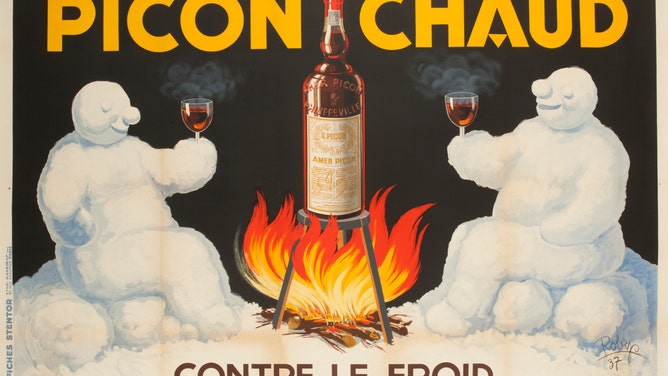
In this 1930s French advertisement, two snowmen each enjoy a glass of the aperitif Picon. The ad roughly translates to "Hot Picon against the cold".
(David Pollack / Corbis / Getty Images)
"The snowman had this knack for showing up at these moments in the same way he showed up in the earliest magazines and the earliest greeting cards and the earliest advertisements," Eckstein said.
"Now there are some reasons for all of this, and an example would be that he showed up in these advertisements because he was a public domain and people loved him," Eckstein said. "People love the snowman, so he was a very convenient pitchman to use for pitching a product."
Being public domain, advertising products with his image could be done at no cost. He was also a non-denominational figure, making his appeal to consumers more universal.
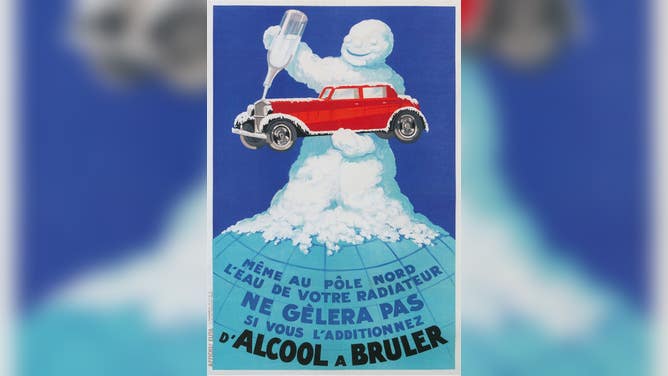
A vintage French advertisement for anti-freeze. The ad shows a snowman at the North Pole pouring anti-freeze into a red car’s radiator.
(Found Image Holdings / Corbis / Getty Images)
Because of factors such as these, Eckstein said, the snowman was used to sell a variety of products ranging from toothpaste to beer and from Cadillacs to cocaine.
As much as the snowman was used to sell products, the advertisements also began to sell the public on what would become the modern, standard look of the snowman — one that included a corncob pipe and eyes made out of coal.
Fields and Frosty
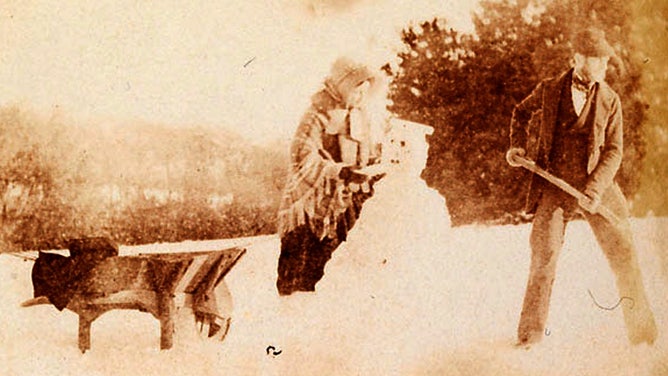
A man shovels snow in a field, while a woman places the finishing touches on a snowman. This is one of the earliest photos of a snowman.
For most of history, the appearance of snowmen did not follow a certain template, giving the public creative liberties to design him as they pleased.
"The people felt in the Middle Ages to finally, not just make snowmen, but to make it with a message as well," Eckstein said. "Snowman-making was more of an art form."
But in the early 20th century, the rise of advertisements, magazines, movies and other media featuring the wintry figure brought the public on the same cultural page, creating — perhaps unintentionally — an expectation of how the snowman "should" look.
He also went from being an art form to being an everyman.
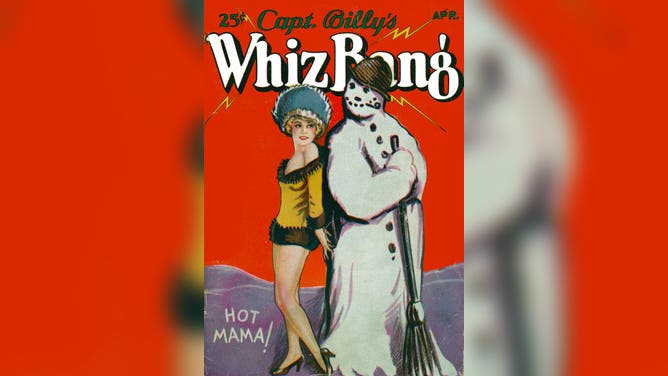
The magazine 'Captain Billy's Whiz Bang' features a showgirl and a snowman on the April 1928 edition printed in New York City.
(Transcendental Graphics / Getty Images)
"The snowman was depicted as sort of a born loser and someone who would become sympathetic," Eckstein said. "This campaign and the exposure the Snowman was getting in print media and different things endeared the public to the snowman."
According to Eckstein, our contemporary idea of the snowman began to take shape in the 1920s and 1930s, and it began to resemble a celebrity of the era.
"It's sort of the heavyset snowman," Eckstein said. "Then, you have a straw hat on top, and then you have a bulbous nose. And the next thing you know, it's trying to look a little bit like W.C. Fields."
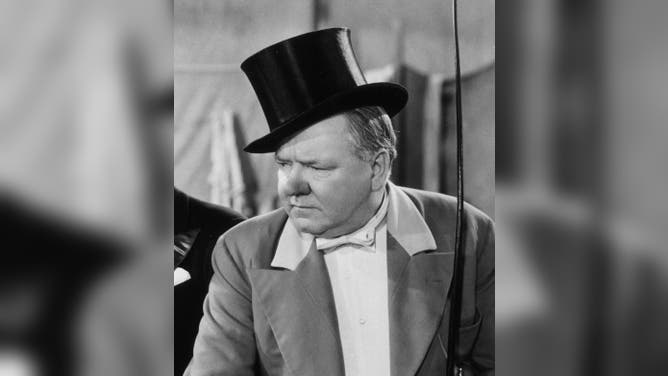
Comedian W.C. Fields from the film 'You Can't Cheat an Honest Man' in 1939.
(American Stock / Getty Images)
The following decades saw this standard image become more cemented in the public mind.
In the 1950s, the song ‘Frosty, the Snowman’ became a hit, helping to propel the jolly, happy soul’s appearance in toys, parades and animated programs in the years that followed.
The snowman, originally portrayed in spiritual and politically charged scenes, turned into a cute and friendly, top hat-wearing figure.
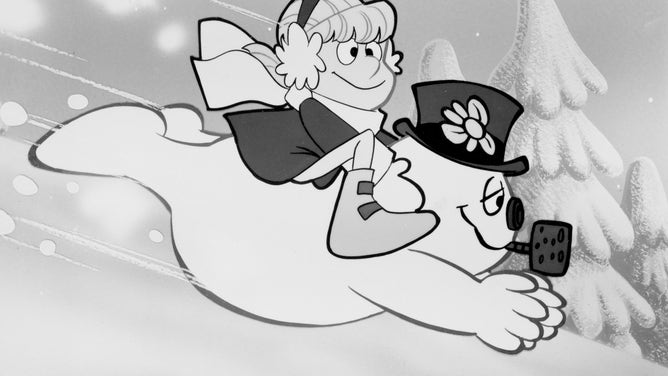
A still from the 1969 animated television special 'Frosty the Snowman', depicting Frosty sliding down a snowy hillside with a child on his back.
(CBS / Getty Images)
Reflections
"Talking about the snowman’s evolution, it's more reflective of man's evolution because it's always, in any generation, any particular time, a reflection of man at that time," Eckstein said.
This reflection may be why a man made of snow has resonated for those made of flesh and blood.
Although most snowmen today mimic the design provided by movies and advertisers of the 20th century, Eckstein believes there should still be room for originality.
"The best advice I can give people when they go out to make a snowman is to be creative and not think that you should buy it in a kit with a pre-made carrot and things like that," Eckstein said.
"What's even more exciting is if you go into your garage, you go someplace, you find objects that you're going to make a face into your new snowman and make it all your own. "
"I think it's so exciting to see a kid make a snowman and just do it on his own," Eckstein said. "And then you say, 'that kid's on his way to being his own voice and expressing himself.'"
